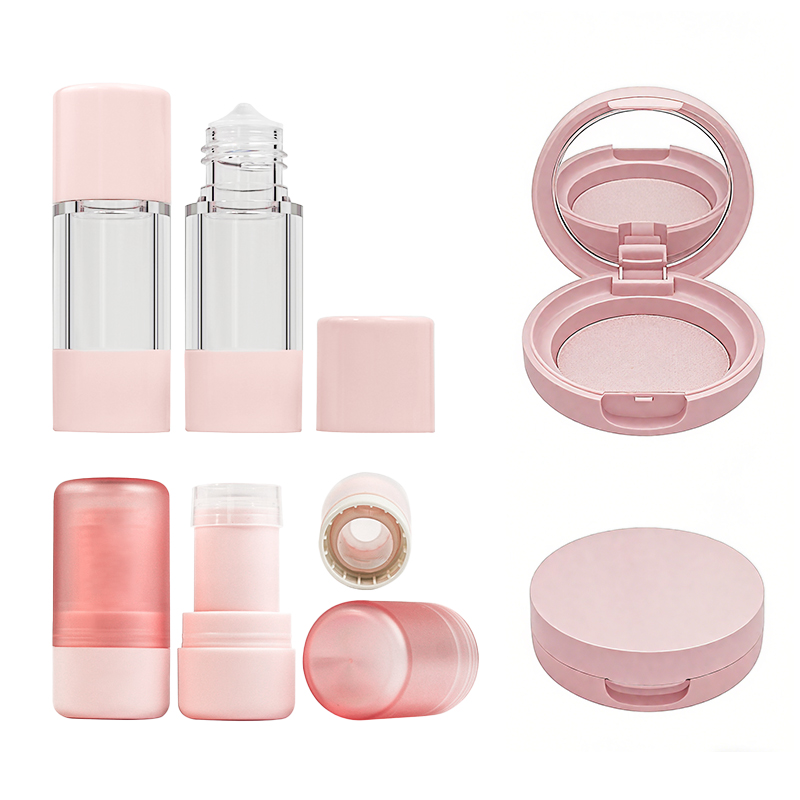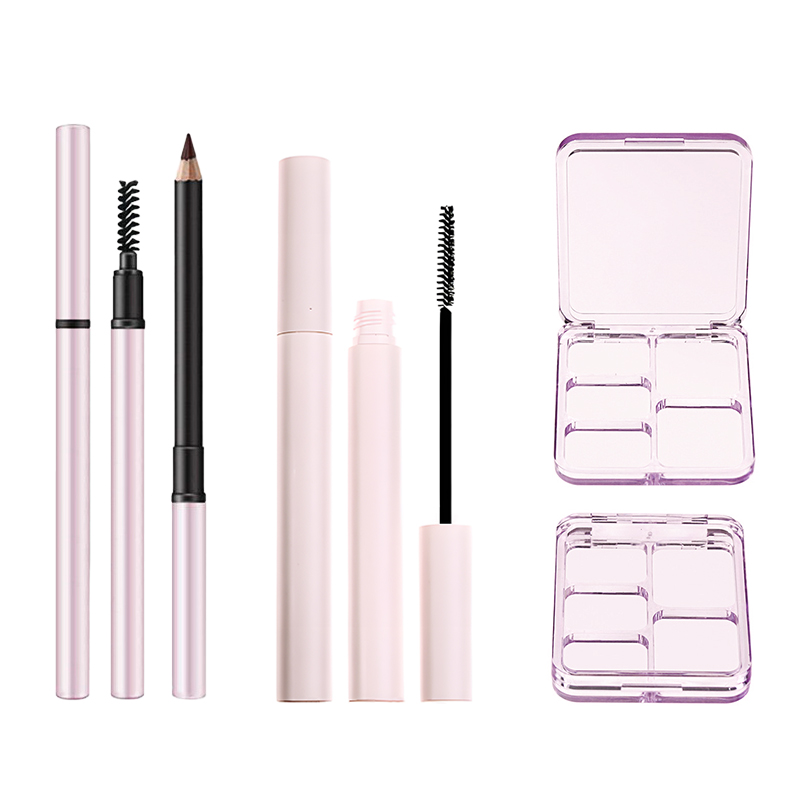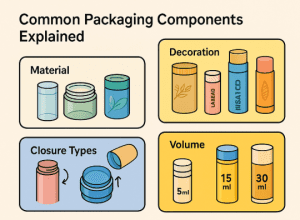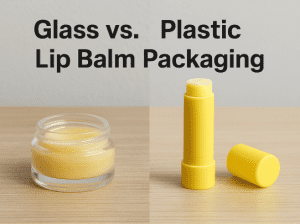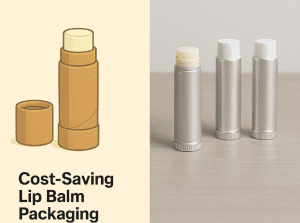The Ultimate Guide to Lip Balm Packaging Options
You wouldn’t wear a ballgown to a mud run—or stuff caviar in a paper bag. So why do so many brands slap high-end lip balm into packaging that feels like it came free with cereal? Lip balm packaging isn’t just about holding product; it’s the handshake before your customer even tries what’s inside. And if you’re pushing out thousands of units, that handshake better feel premium, practical, and on-brand.
Some tubes crack when it’s cold. Some caps pop off mid-transit like they’ve got somewhere else to be. And don’t even get me started on leaky jars ruining entire shipments—talk about watching profits melt faster than cocoa butter in July.
If you’re scaling production or launching your next line, this guide breaks down what works (and what definitely doesn’t) for every volume size and closure type—from twisty sticks to luxe glass pots—and how smart material choices can save real dollars without making your brand look cheap.
Key Points for Lip Balm Packaging That Doesn’t Crack, Leak, or Look Cheap
➔ Material Choices Matter: Plastic is affordable and versatile; glass offers a luxe feel but adds weight; eco-friendly options like paperboard bring sustainability to the forefront.
➔ Closure Types Count: From twist-up tubes to snap lids and screw caps—choosing the right closure prevents leaks and elevates user experience.
➔ Decorations Define First Impressions: Hot stamping, silk screening, embossing—your decoration method speaks volumes before the balm touches lips.
➔ Size Is Strategy: 5 ml works for samples or sets; 10–15 ml hits the everyday sweet spot; 30 ml jars suit premium lines or multipurpose balms.
➔ Leak-Proof Builds Save Profits: Child-resistant seals, silicone gaskets, and embossed leak barriers keep product (and your margins) intact during shipping.
Common Packaging Components Explained
Breaking down the nuts and bolts of what makes up smart, functional, and eye-catching product packaging.
Material Matters: Plastic, Glass, and Eco-Friendly Options
• Plastic is lightweight and cost-effective—think PET, which is crystal-clear and tough, or HDPE, known for its flexibility and chemical resistance.
• Glass gives off that luxe vibe, ideal for high-end formulas needing airtight protection.
• Then there’s the green route—biodegradable, compostable plastics or jars made from recycled materials, perfect for eco-conscious consumers who care about their footprint as much as their finish.
• The choice impacts recyclability, shelf life, and consumer perception—so it’s not just about looks; it’s about values too.
Decoration Techniques—from Hot Stamping to Silk Screening
- Hot Stamping: A metallic foil pressed onto surfaces—adds flash without fuss.
- Silk Screening: Ink pushed through mesh stencils—great for bold logos.
- Labeling: Fast, flexible branding that sticks.
- Embossing/Debossing: Raised or recessed designs give texture you can feel.
- Offset Printing: For detailed images with color accuracy.
- Pad Printing: Perfect for curved surfaces like domed caps.
- Engraving: Clean lines etched directly into glass or metal components.
These techniques elevate basic containers into memorable brand statements—even in something as small as lip balm packaging tubes or pots.
Closure Types Explained: Screw Caps, Snap Lids, and Twist-Up
✧ Screw caps are the go-to for secure sealing—twist ‘em tight and they stay put.
✧ Snap lids? Quick access with a satisfying click. Great for on-the-go reapplication moments.
✧ Twist-up mechanisms make dispensing smooth—you rotate the base instead of digging fingers into a pot.
✧ Then there are specialty closures like pump dispensers for hygiene or child-resistant closures that meet safety regulations without sacrificing style points in your lip balm container game.
Volume Guide: 5 ml vs. 15 ml vs. 30 ml Containers
Sometimes size really does matter:
- A tiny 5 ml container is pocket-friendly but best suited for samples or ultra-concentrated formulas.
- The mid-range hero? That’d be your trusty 15 ml vessel—enough volume without bulk.
- Go big with a hefty 30 ml, often used in multi-use products like tinted balms or hybrid skincare sticks.
| Volume | Typical Use Case | Portability | Consumer Perception |
|---|---|---|---|
| 5 ml | Samples/On-the-go | High | Minimalist |
| 15 ml | Daily-use Lip Products | Medium | Practical |
| 30 ml | Multi-purpose Applications | Low | Premium |
According to Euromonitor International’s Q1 2024 report on global beauty packaging trends, “Consumers now associate smaller formats with both sustainability and luxury travel convenience.”
This shift has driven brands toward more compact yet refillable options—even across premium lines like Topfeel’s seasonal collections where every milliliter counts toward shelf appeal and function alike.
Glass vs. Plastic Lip Balm Packaging
A quick look at how glass and plastic stack up when it comes to storing your favorite lip savers.
Glass
Glass containers bring a premium feel that’s hard to beat.
• The aesthetic appeal is top-tier—clear jars give off luxury vibes even before you open them.
• But they’re heavier, which can be annoying for daily carry.
• You’ll love the fact that they’re recyclable, making them a greener pick overall.
• On the downside? They’re fragile, so one drop could end the party early.
Now, here’s where things get interesting. According to Euromonitor’s 2024 Packaging Report, consumer demand for sustainable beauty packaging rose by 28%, with glass being favored for its non-reactive and preservative properties—especially in small-batch skincare like tinted balms and herbal salves.
Still, while glass protects product integrity better than most materials, it’s not exactly travel-friendly unless fortified with extra packaging layers to improve shatter resistance.
Plastic
Plastic wins on convenience—hands down. It’s super lightweight, making it ideal for on-the-go balm lovers who toss tubes into every bag they own.
- ✔ Durable enough to survive drops without cracking.
- ✔ More cost-effective during production and shipping.
- ✔ Can be molded into practically any shape, giving brands flexibility.
- ✖ But let’s talk about those lingering concerns over BPA and phthalates, especially in cheaper variants.
Here’s a breakdown comparing common plastic types used in balm containers:
| Material Type | Weight per Unit (g) | Recyclability Score (/10) | BPA Presence |
|---|---|---|---|
| PET | 3 | 8 | No |
| HDPE | 4 | 9 | No |
| PVC | 5 | 2 | Yes |
| PP | 3 | 7 | No |
That said, innovation is catching up. In fact, Mintel’s Global Packaging Trends report notes that biodegradable plastics are slowly entering mainstream usage despite higher costs—a promising shift for eco-conscious lip product fans.
So while plastic might lack the high-end charm of glass jars, its practicality keeps it king in everyday lip balm use cases.
Cost-Saving Lip Balm Packaging Solutions
Looking for smart ways to cut packaging costs without skimping on style or sustainability? Let’s break down two standout options.
Eco-Friendly Paperboard Sticks in 10 ml for Budget Brands
This one’s a win-win for wallet-conscious brands and eco-aware consumers. The use of eco-friendly materials like recycled kraft in these compact, cylindrical tubes helps keep waste low and charm high.
- Paperboard sticks are biodegradable, making them a top pick for zero-waste fans.
- The standard size—10 ml—offers enough balm without overpackaging.
- Great for indie and small-batch makers aiming to align with green values.
- Brands can easily customize the outer wrap with soy-based inks or natural dyes.
According to Mintel’s Global Packaging Trends Report 2024, “Sustainable formats that also feel premium are driving consumer loyalty more than ever.” That’s exactly where these budget-friendly tubes shine.
Lightweight Aluminum Tubes with Efficient Silk Screening
When toughness meets minimalism, you get this sleek combo. These tubes bring durability without the bulk, thanks to their featherlight build. And the best part? They don’t just look good—they work hard too.
• Made from recyclable metals, these lightweight aluminum tubes reduce shipping weight and environmental load
• The surface is ideal for sharp branding through high-res silk screening, keeping visuals crisp
• Perfect for active users who toss balms into pockets or bags—no cracking or leaking
• Compatible with both creamy and waxy formulas
For brands targeting modern aesthetics but still chasing cost-efficiency, this packaging nails it. One-time tooling costs are offset by long-term savings in transport and shelf life. Even Topfeel has dabbled in this format across seasonal collections.
Tired of Leaks? Leak-Resistant Balm Packaging Solutions
Say goodbye to gooey messes—these smart packaging ideas keep your balm right where it belongs.
Twist-Up Tubes with Child-Resistant Seals
Short bursts of daily use shouldn’t mean risking leaks or spills. These twist-up tubes bring a whole new level of convenience and safety with their child-resistant seals, making them ideal for on-the-go applications.
• Built-in locking mechanism prevents accidental twisting in bags or pockets.
• Durable plastic shell resists cracking under pressure, keeping contents secure.
• Ideal for personal care items like lip treatments and solid perfumes.
When paired with sleek design and a compact profile, these tubes not only protect your balm but also elevate the user experience—because nobody wants melted goo at the bottom of their purse.
Hinged-Lid Jars Featuring Silicone Gaskets
Airtight, elegant, and built to last—hinged-lid jars with silicone gaskets are the unsung heroes of leak-proof storage. These containers aren’t just about looks; they’re engineered for serious function.
According to Mintel’s Global Packaging Trends Report released in early 2024, over 62% of consumers now prioritize leak prevention when choosing cosmetic packaging—a stat that proves silicone sealing is more than just hype.
• The flexible gasket molds tightly around the rim, blocking air and moisture.
• Snap-shut lids offer quick access without compromising integrity.
• Great fit for thicker formulas like balms or salves that need extra protection.
Topfeel’s latest balm line uses this format to lock in freshness while delivering a luxe feel that customers can literally hear when they snap it closed.
Snap Lid Compacts with Embossed Leak Barriers
Clean lines meet clever engineering in these snap lid compacts, which feature integrated embossed leak barriers designed specifically for mobile lifestyles.
Flip it open—no drips, no drama. Close it tight—it stays sealed even if tossed into a gym bag or travel pouch.
Compact form? Check. Sleek design? Double check. But it’s those raised grooves inside the lid that do the heavy lifting:
– They trap excess product before it reaches the edge.
– They redirect flow back into the well.
– They work best with semi-solid balms thanks to surface tension dynamics.
With balm storage getting smarter every year, this kind of thoughtful detailing makes all the difference when portability meets practicality.
FAQs
Cost matters, especially when you’re producing thousands of units. But cutting corners doesn’t mean sacrificing quality or style. Some smart choices include:
- Paperboard sticks (10 ml): budget-friendly and biodegradable—great for eco-conscious brands.
- Slim aluminum tubes: lightweight yet sturdy, with a clean metallic finish that catches the eye.
- Basic plastic containers: low-cost molds in various shapes to match your brand personality.
It often comes down to feel versus function. Glass has that upscale vibe—it’s weighty, elegant, and keeps formulas fresher longer due to its non-reactive surface. But it’s also fragile and heavier on shipping costs. Plastic is lighter, tougher during transport, and easier on the wallet—but may not offer the same luxe impression on shelves.
A leaky balm can ruin more than just a purse lining—it can damage trust in your product too.
- Twist-up tubes with secure locking bases keep things tidy while adding child safety features.
- Hinged-lid jars fitted with silicone gaskets create an airtight seal that holds up under pressure.
- Snap lids designed with built-in leak barriers protect both formula integrity and customer satisfaction.
Absolutely—and you don’t have to sacrifice design flair either. Paperboard sticks made from recycled materials strike a balance between sustainability and shelf appeal. With custom printing techniques like embossing or foil stamping, they look polished without harming the planet.
Because they’re practical—and people love practical when it feels effortless. Twist-ups let users apply product without dipping fingers into pots or dealing with messy caps. They’re easy to produce at scale using both plastic or metal casings, making them ideal across price tiers—from boutique batches to mass-market lines—with minimal waste involved during filling processes too.

